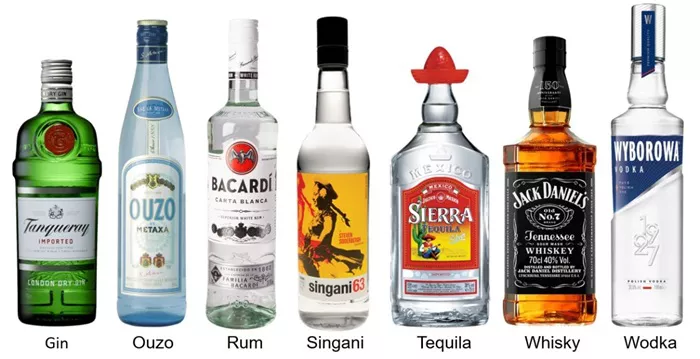Rye whiskey, with its rich history and distinctive flavor profile, has been capturing the hearts of whiskey enthusiasts for centuries. But what exactly goes into the creation of this beloved spirit? In this comprehensive exploration, we delve into the intricate components and processes that define the essence of rye whiskey.
The Grain Backbone: What is Rye Whiskey Made Out Of
At the heart of rye whiskey lies its namesake grain: rye. Distinct from its counterparts like bourbon, which primarily features corn, rye whiskey must contain a majority of rye in its mash bill. According to regulations, rye whiskey in the United States must be made from a mash bill containing at least 51% rye. This grain imparts a spicy, robust flavor profile that distinguishes rye whiskey from other varieties.
Malt and Other Grains: What is Rye Whiskey Made Out Of
While rye takes center stage, it often shares the spotlight with other grains. Malted barley, in particular, plays a crucial role in the fermentation process. As an enzyme-rich grain, malted barley aids in converting starches into fermentable sugars, contributing to the development of complex flavors during fermentation and distillation. Additionally, some rye whiskey mash bills incorporate small amounts of corn or other grains to round out the flavor profile and achieve a desired balance.
Water: The Elixir of Life in Rye Whiskey Production
Water, often referred to as the “elixir of life,” serves as a fundamental ingredient in rye whiskey production. From mashing to dilution, water plays multiple roles throughout the distillation process. During mashing, hot water is combined with the grains to facilitate enzymatic activity and extract fermentable sugars. Subsequently, water is used in the fermentation process to create the mash, providing an environment conducive to yeast activity. Finally, water is added during proofing to adjust the whiskey to its desired alcohol by volume (ABV) level before bottling.
Yeast: The Catalyst of Fermentation in Rye Whiskey Production
Yeast, a microscopic organism, serves as the catalyst for fermentation in rye whiskey production. Selected strains of yeast are introduced into the mash to convert sugars into alcohol and carbon dioxide through the process of fermentation. This transformative process not only produces ethanol, the primary alcohol in whiskey, but also generates a myriad of flavor compounds that contribute to the character and complexity of the final product. Yeast selection and fermentation conditions are meticulously controlled to achieve desired flavor profiles and ensure consistency from batch to batch.
The Distillation Process: Transforming Mash into Spirit
The distillation process is where the alchemy of rye whiskey truly takes place. Traditionally, rye whiskey is distilled using copper pot stills or column stills, each method imparting its own nuances to the final product. During distillation, the fermented mash is heated to the point where alcohol vaporizes and rises through the still, separating from the solids and impurities. The vapor is then condensed back into liquid form, resulting in a higher-proof distillate known as “new make spirit.” This raw spirit undergoes further refinement through additional distillation runs or aging to develop its desired character and flavor profile.
Barrel Aging: Infusing Character into Rye Whiskey
A hallmark of rye whiskey production is the process of barrel aging, during which the new make spirit matures and develops its signature flavors. Rye whiskey must be aged in charred, new oak barrels, typically made from American white oak. As the spirit interacts with the wood, it absorbs compounds such as vanillin, lignin, and tannins, which impart notes of caramel, vanilla, and spice. Additionally, the porous nature of oak allows for oxygenation, which facilitates chemical reactions that further refine the whiskey’s flavor and aroma over time. The duration of aging varies depending on factors such as climate, barrel size, and desired flavor profile, with some rye whiskeys aging for several years or more to achieve optimal balance and complexity.
Blending and Bottling: Crafting the Final Expression
Once aged to perfection, the rye whiskey undergoes the final stages of production: blending and bottling. Master blenders meticulously select and combine barrels to create a harmonious blend that showcases the best characteristics of each individual component. This artful process involves balancing flavors, aromas, and proofs to achieve a consistent and well-rounded expression of rye whiskey. After blending, the whiskey is carefully filtered and diluted to its desired ABV before being bottled and labeled for distribution. Each bottle represents the culmination of years of craftsmanship and expertise, ready to be enjoyed by whiskey enthusiasts around the world.
Conclusion: The Essence of Rye Whiskey Unveiled
In conclusion, rye whiskey is a spirit crafted with precision and passion, rooted in a tradition that spans generations. From its grain backbone of rye and complementary grains to the transformative processes of fermentation, distillation, and aging, every step in its production contributes to the creation of a distinctive and complex spirit. As enthusiasts continue to explore the world of whiskey, the allure of rye whiskey persists, captivating palates with its bold flavors and timeless appeal. So the next time you raise a glass of rye whiskey, take a moment to appreciate the artistry and ingenuity that goes into every sip, and savor the essence of this remarkable spirit.


